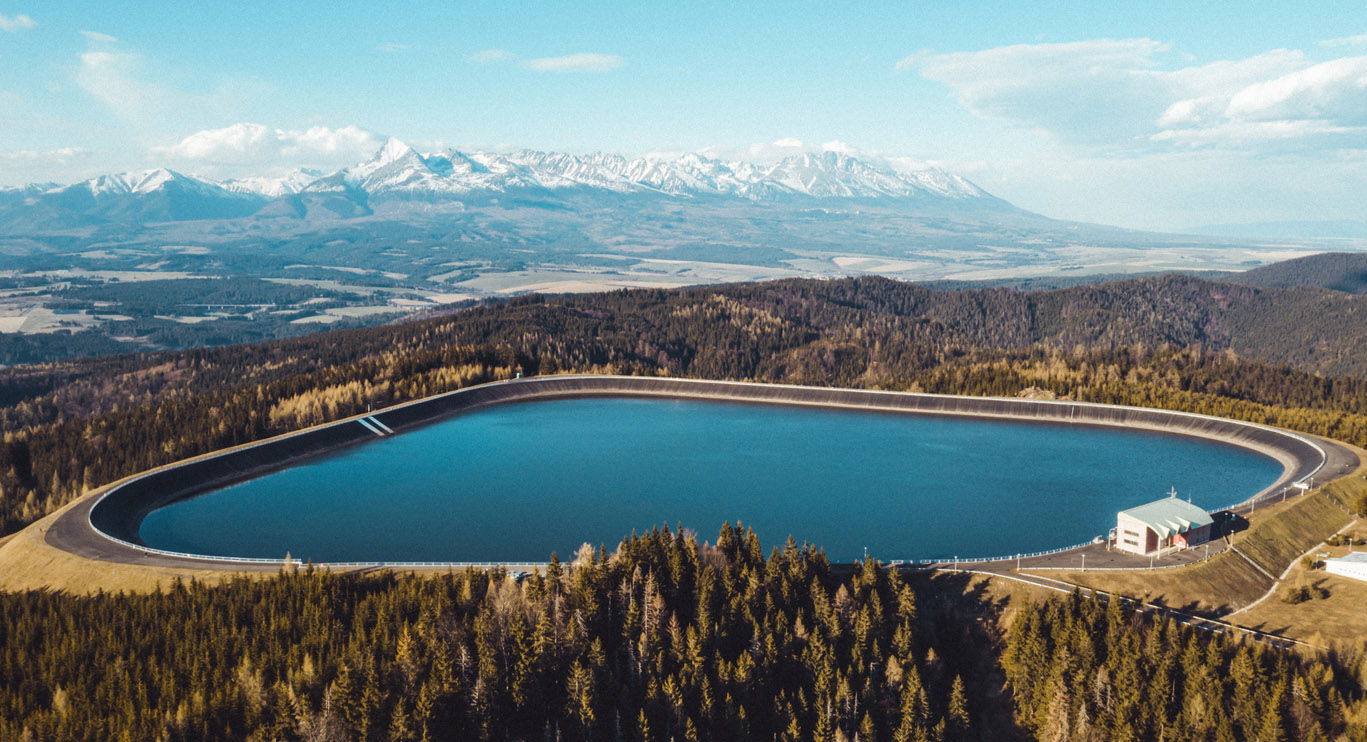Italy has been a world leader in the production of hydroelectric energy for over a century. Hydroelectric energy, already used starting from 1882, can provide a decisive boost to the energy transition and to decarbonisation, making it possible to manage the fluctuations in production from other renewable sources of electricity, especially wind and photovoltaic-generated power, decidedly more unstable.
The electric storage capacity of reservoirs is a sort of substitute for batteries, accumulating energy and making it available when necessary, especially during peaks in demand. In addition, pumped-storage hydroelectric plants are perfect accumulators, veritable “water-based electric batteries”. These plants, in fact, use two reservoirs, one upstream and one downstream: the water, accumulated in the upper lake, is sent into the turbines to produce electricity during times of peak demand. Water is, then newly pumped upstream from the lower reservoir, accumulating, therefore, during times of energy overproduction, that is, when the renewable resources can benefit from the sun and the wind and, therefore, when there’s a lot of energy available in the network.
A pumped-storage hydroelectric plant is a perfect ecological battery that always uses the same water. Yield is higher than 80%; for every kilowatt of electricity that it uses to pump water back upstream, it emits 0.8 KW into the network, losing only 20% to re-pump upstream.
In the future, it will be increasingly necessary to accumulate large quantities of energy because we will also increasingly need to obtain electricity from renewable energy sources with the aim of replacing plants that use fossil fuels. Solar and wind energy are volatile, changeable sources, which can’t be forced to produce electricity when the network requests it; it is, therefore, extremely important to have systems like pumped-storage hydroelectric plants in order to be able to store large quantities of energy available and keep the electricity network stable – providing energy when requested – without polluting and without being dependent on weather conditions.
The local system of hydroelectric plants in Ligonchio, in the Municipality of Ventasso (Province of Reggio Emilia), in operation since 1922, exploits, instead, another intelligent system: a series of artificial reservoirs, situated at different heights and powered by the same water. The mechanical energy sources are various local streams, the largest of which is Torrente Ozola, which flows south of Mount Cusna with a total hydroelectric production of as much as 50 Megawatts. This has been made possible thanks also to the addition of the latest station downstream, which starting operating in 2017.
In the Ligonchio stations, hydroelectric energy is produced with a series of water height changes that move various types of turbines and which exploit thanks to technology the different speeds and force of the water deposited in the various reservoirs.
